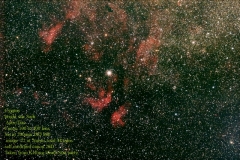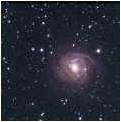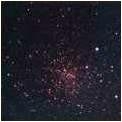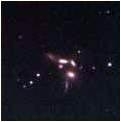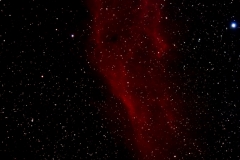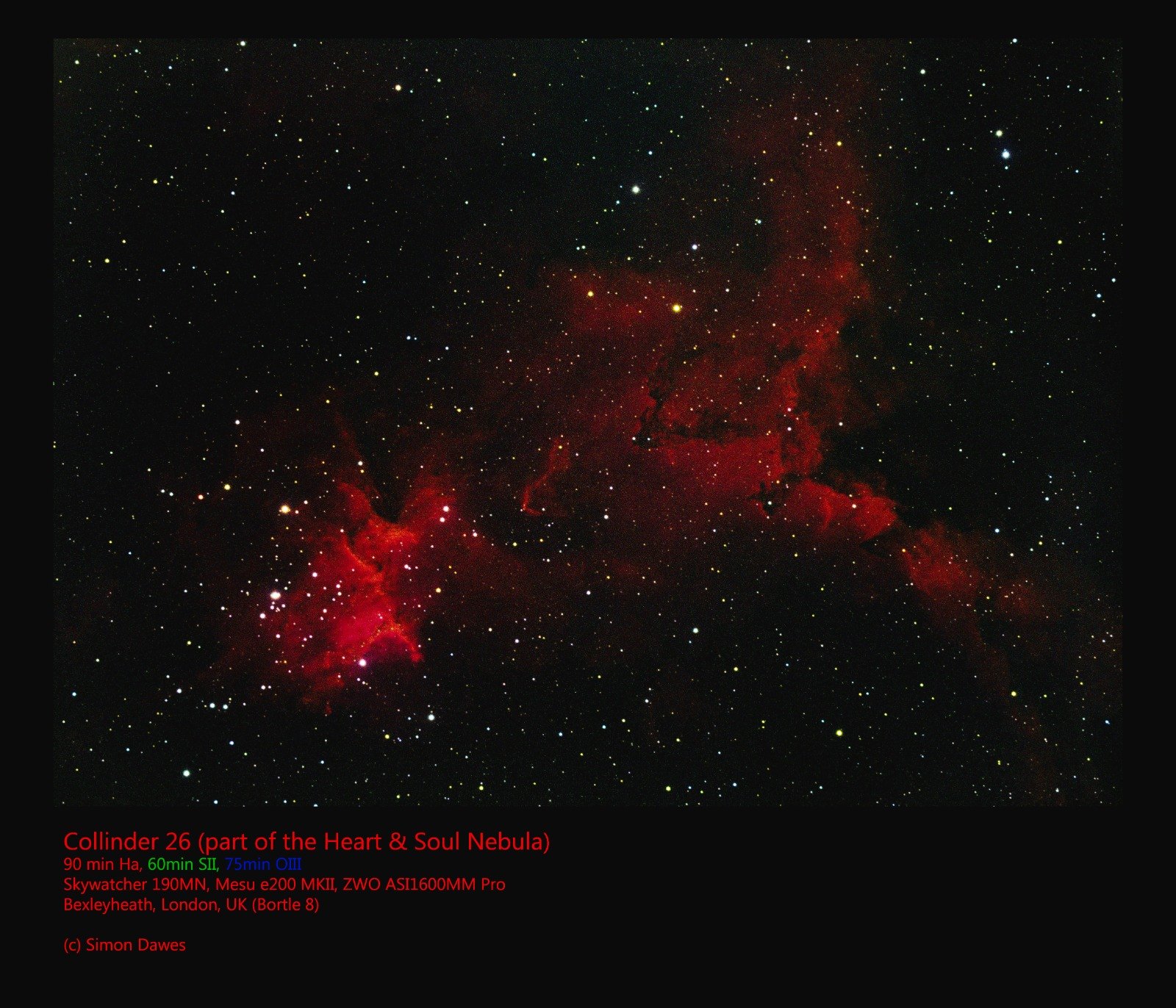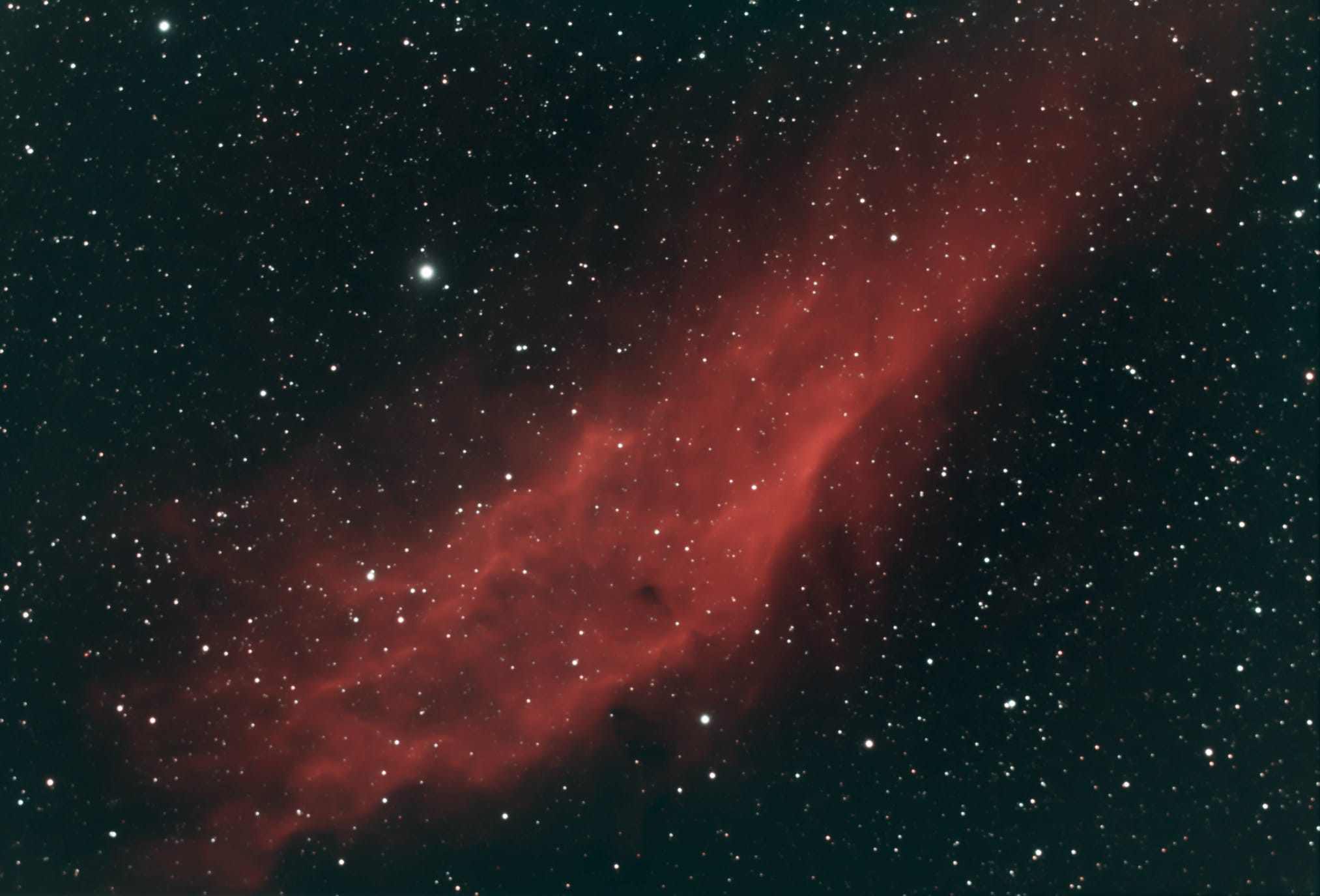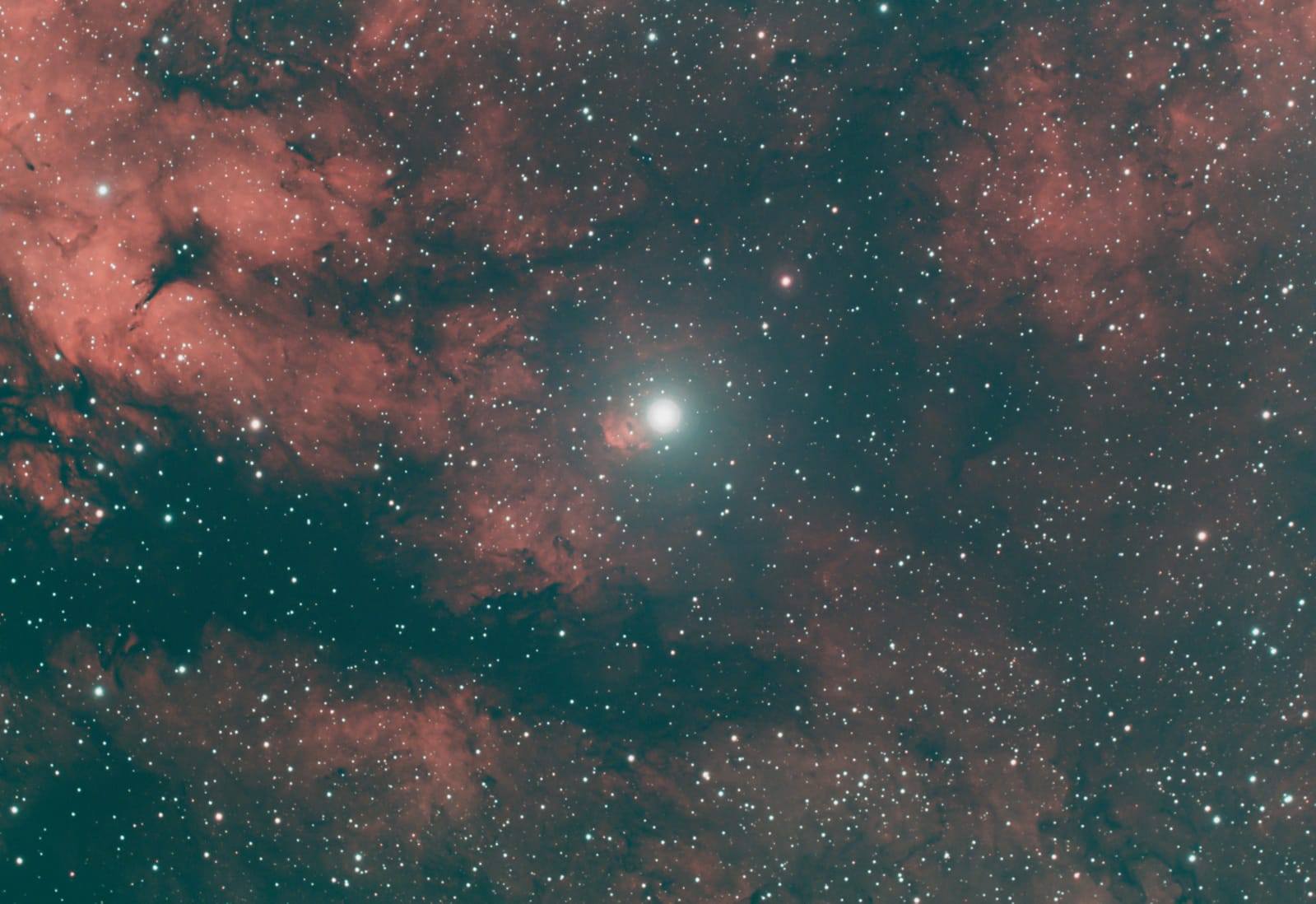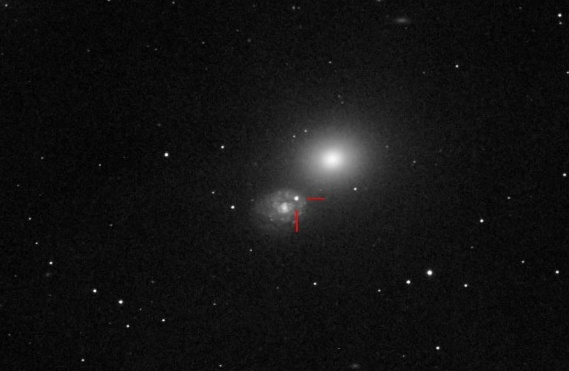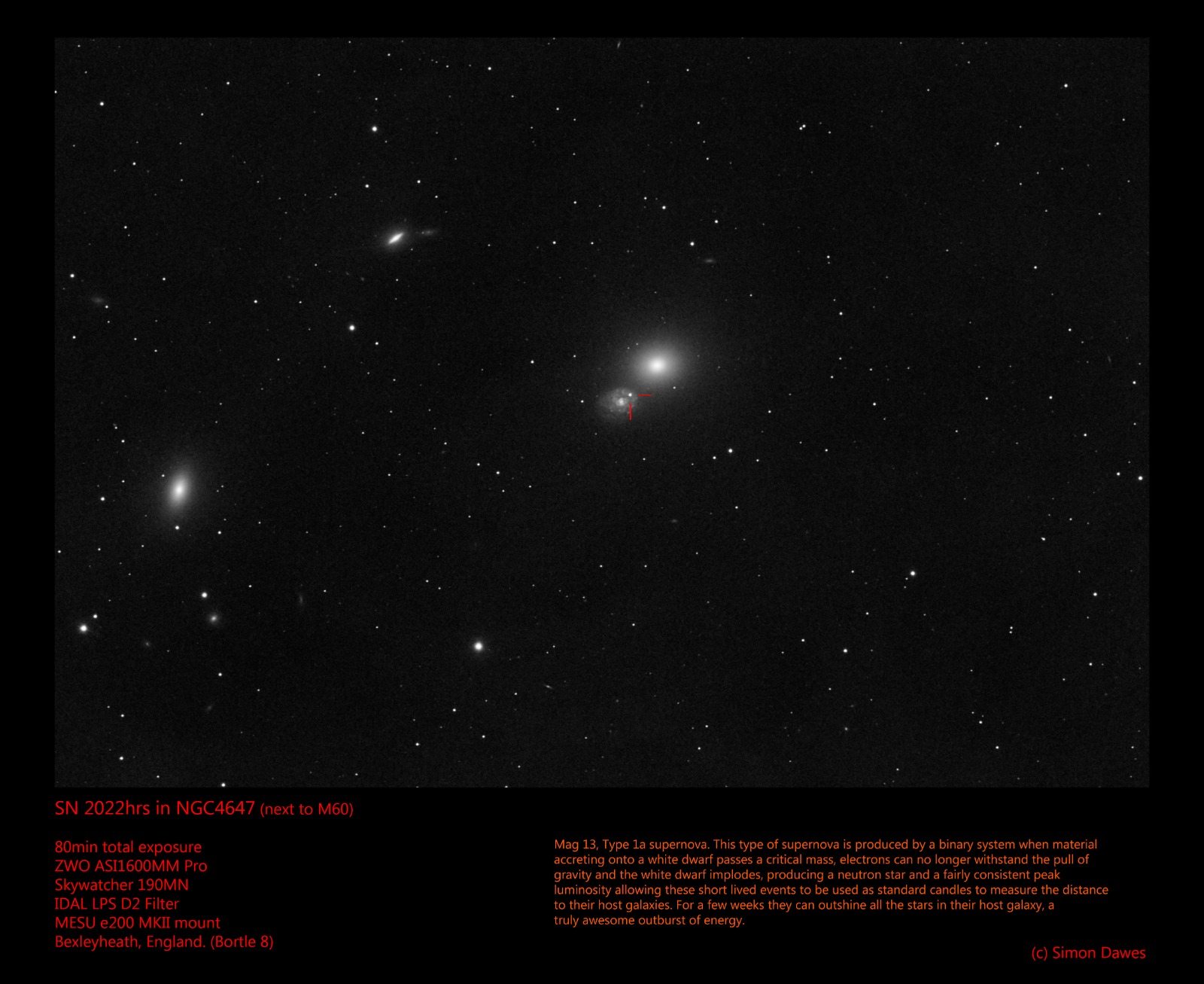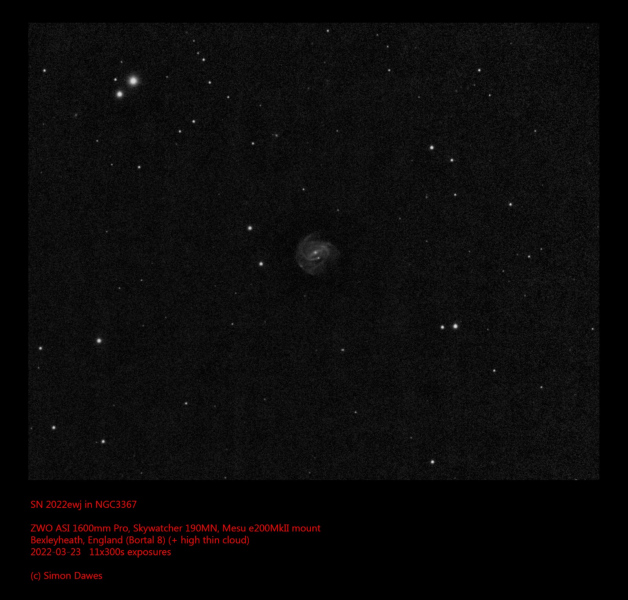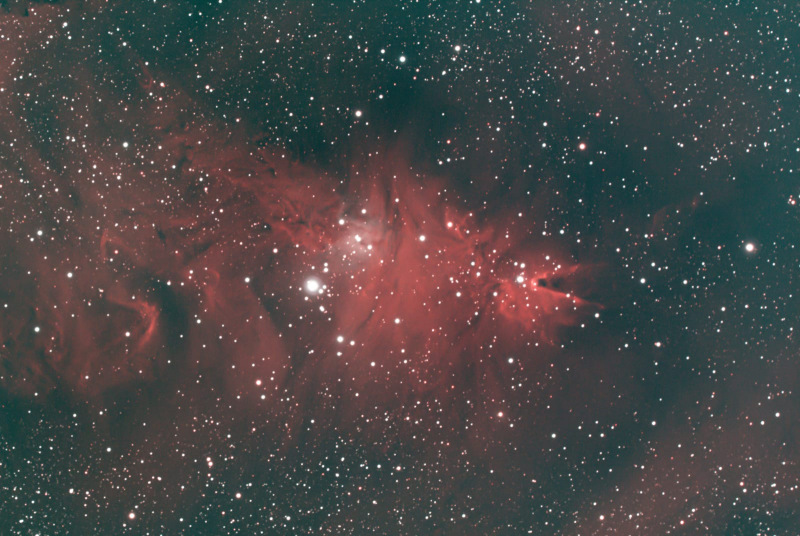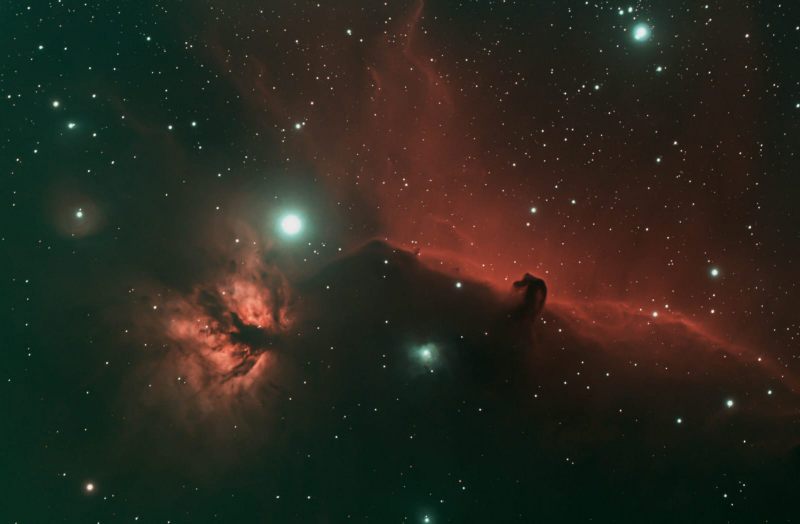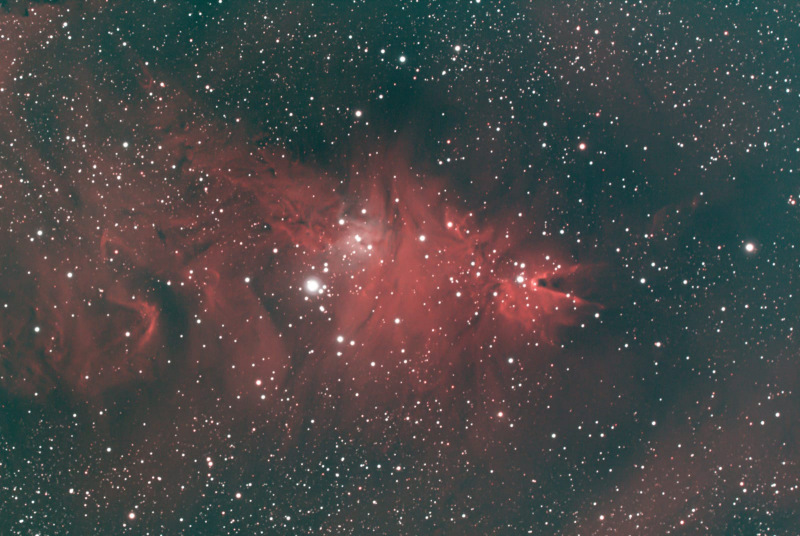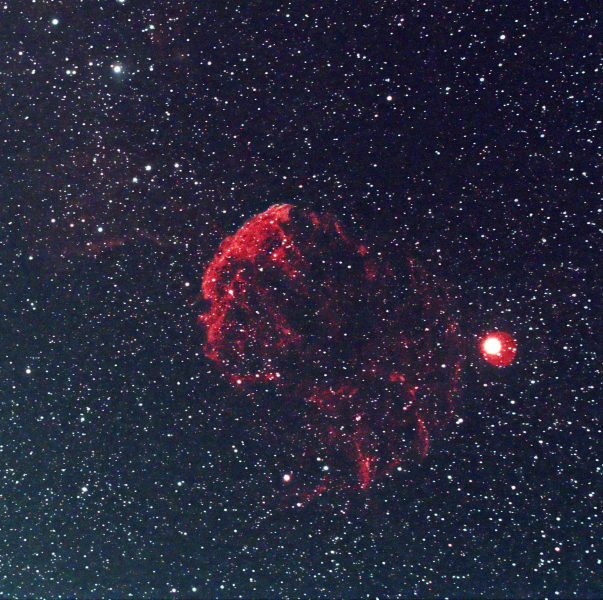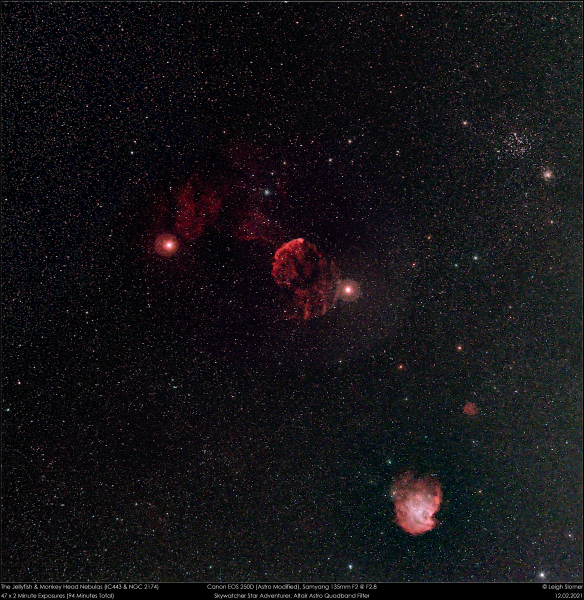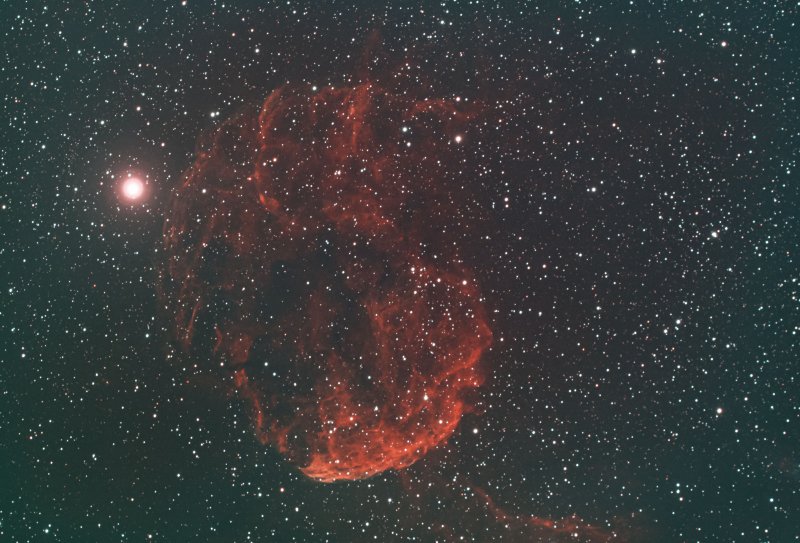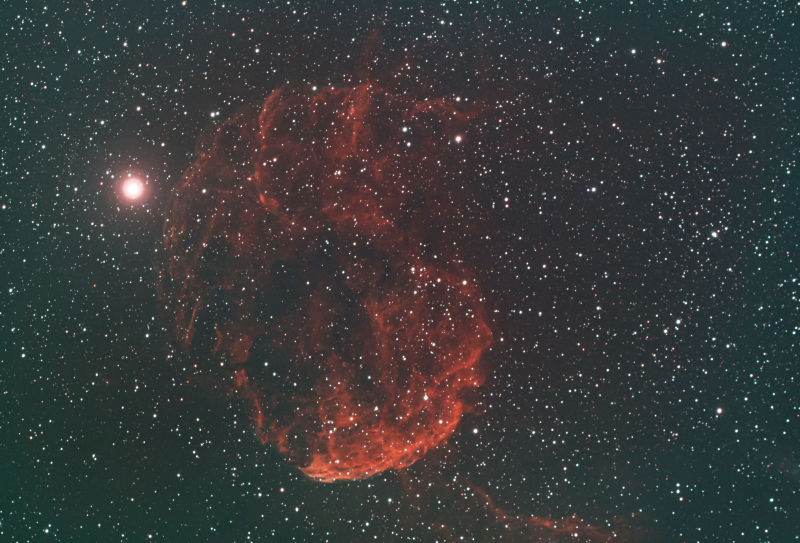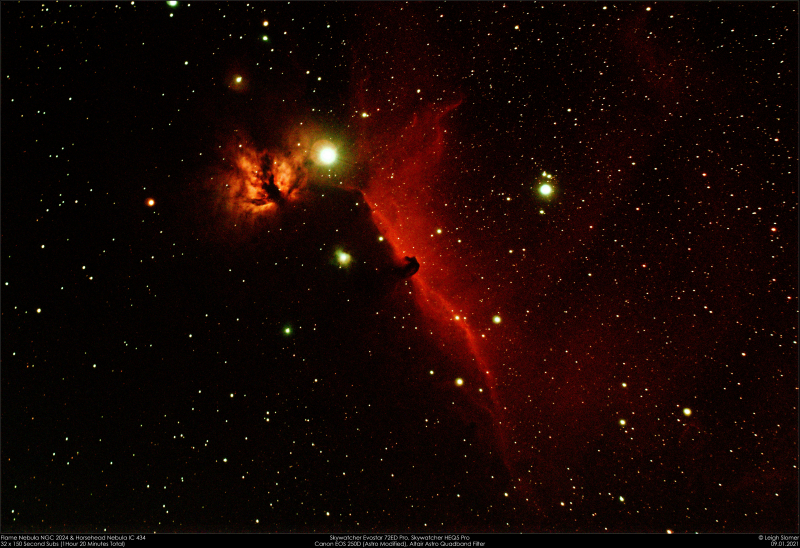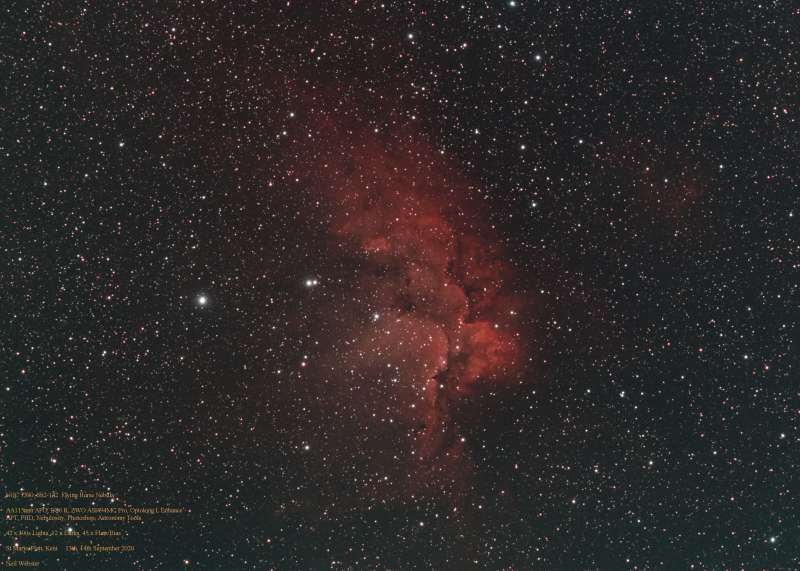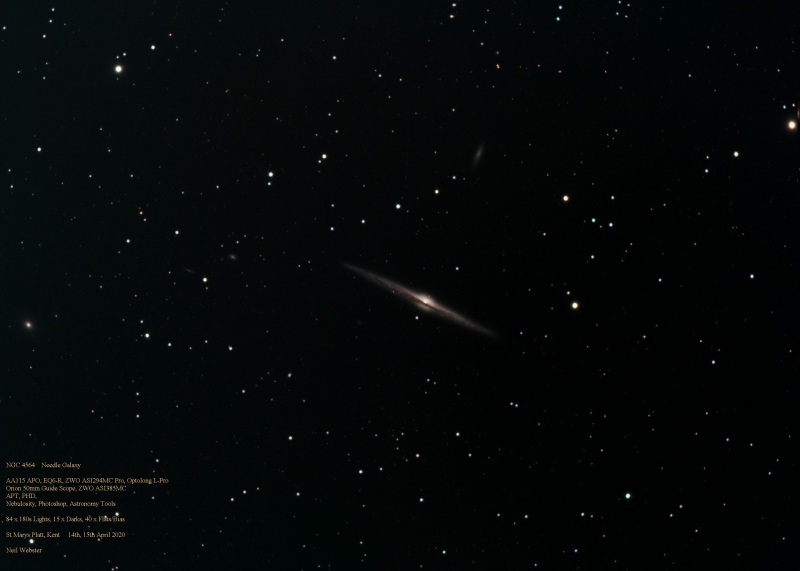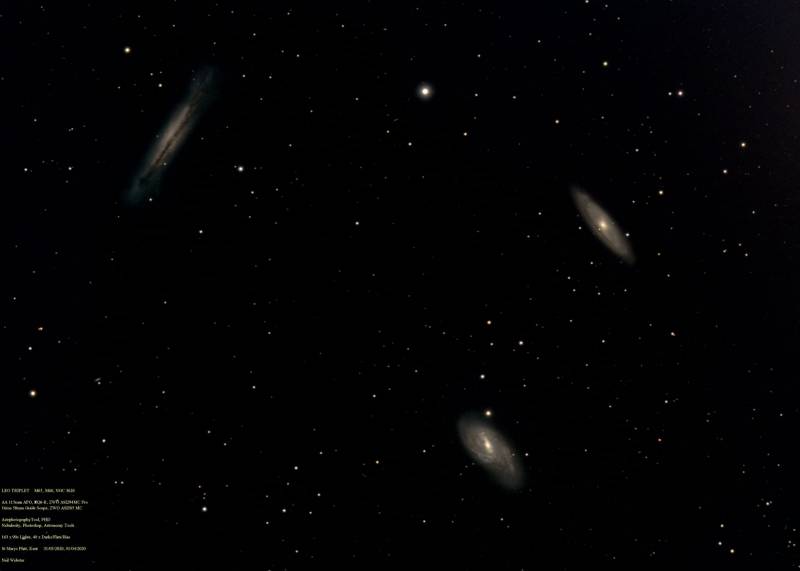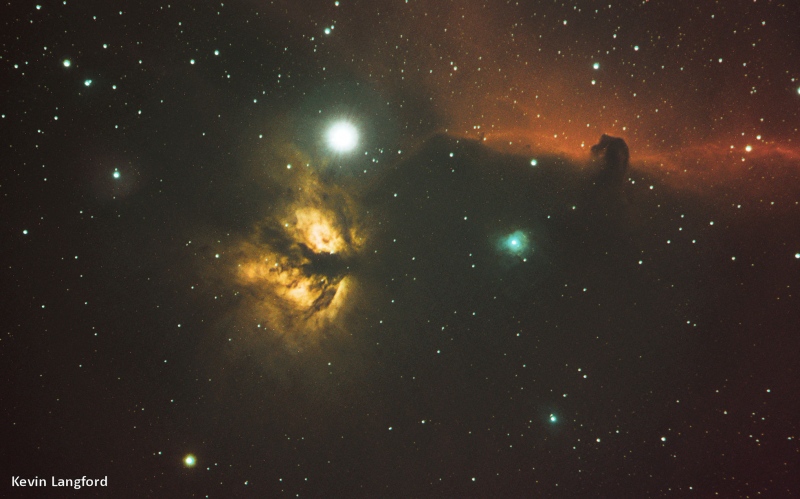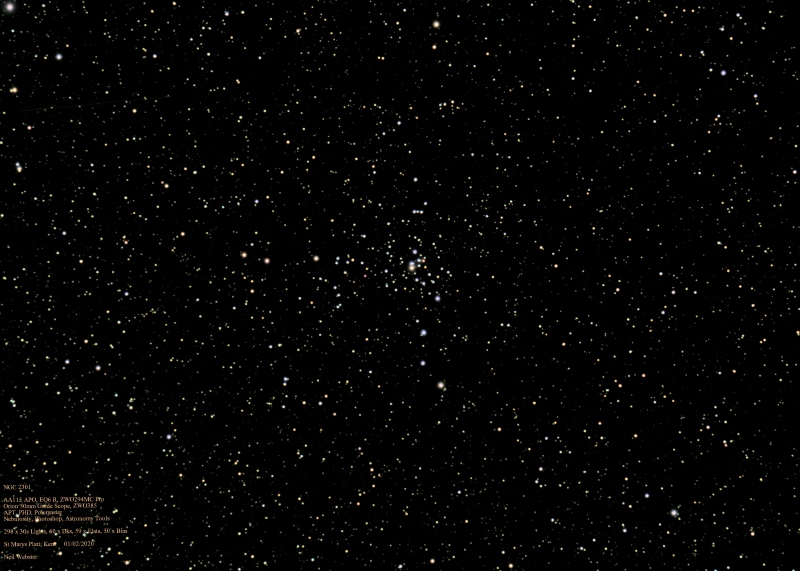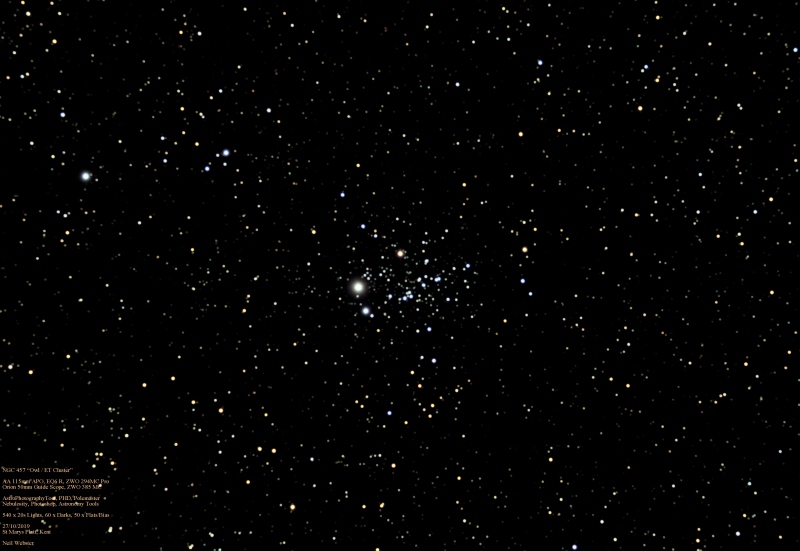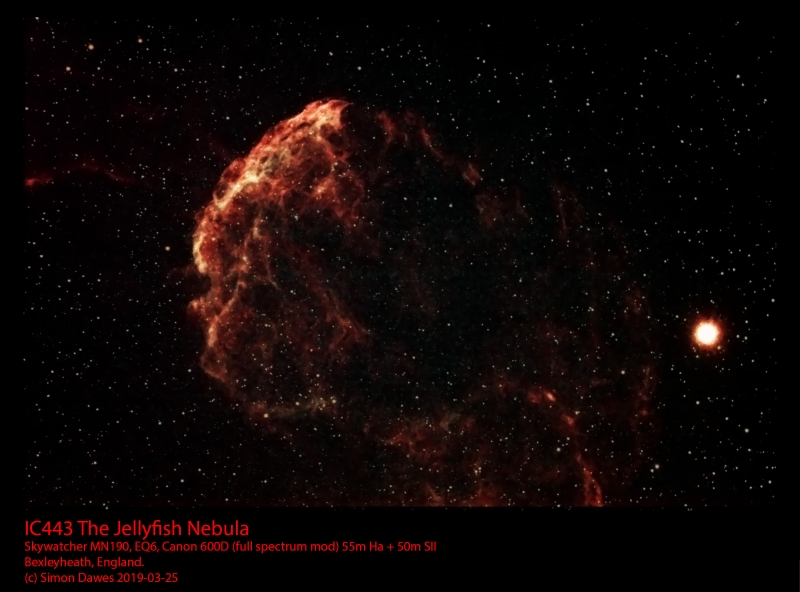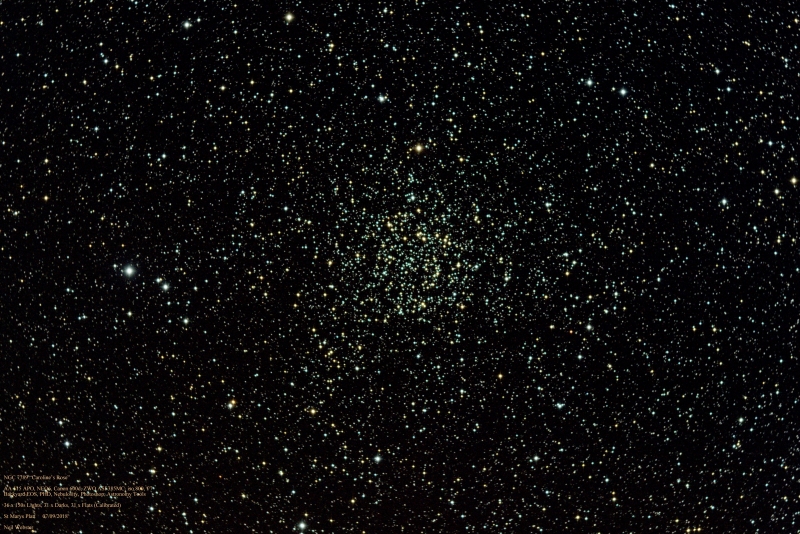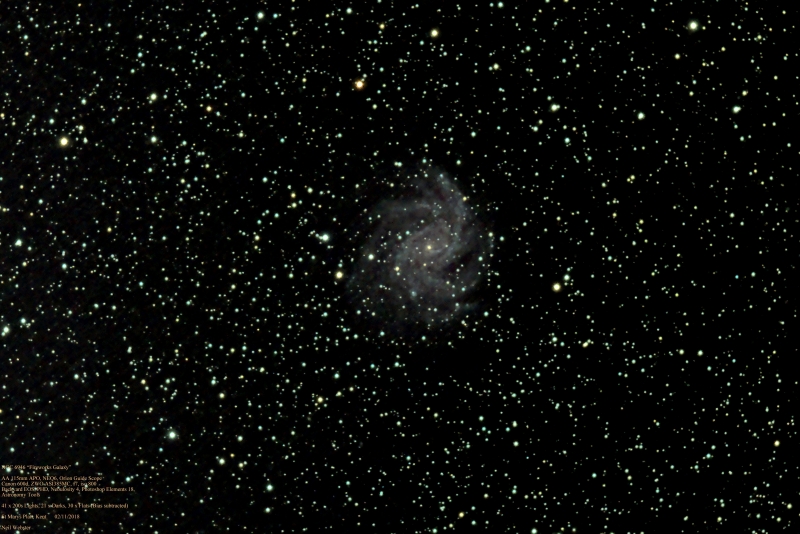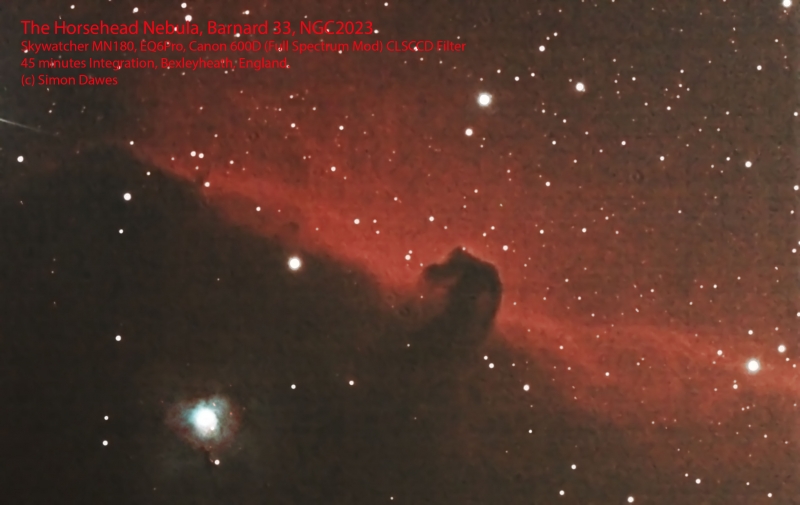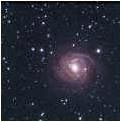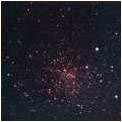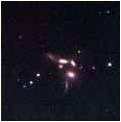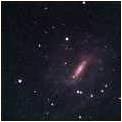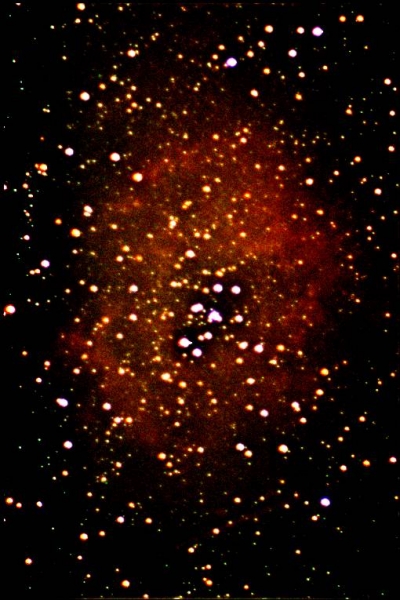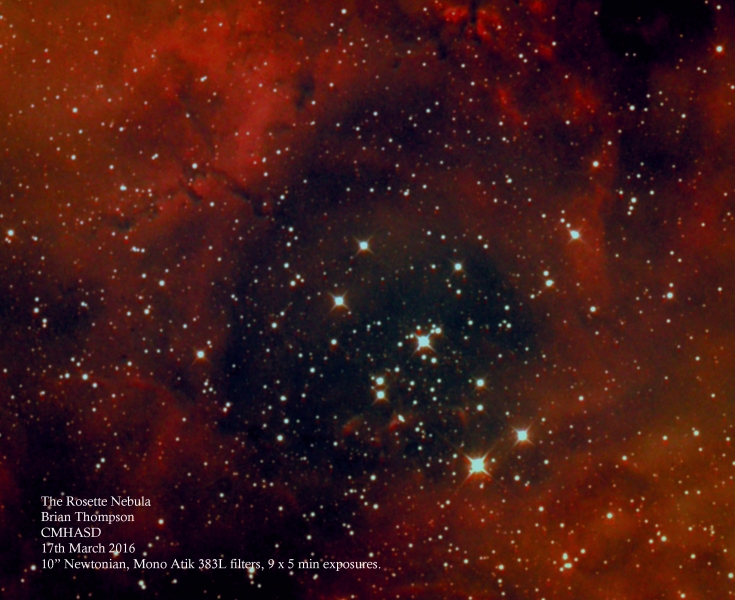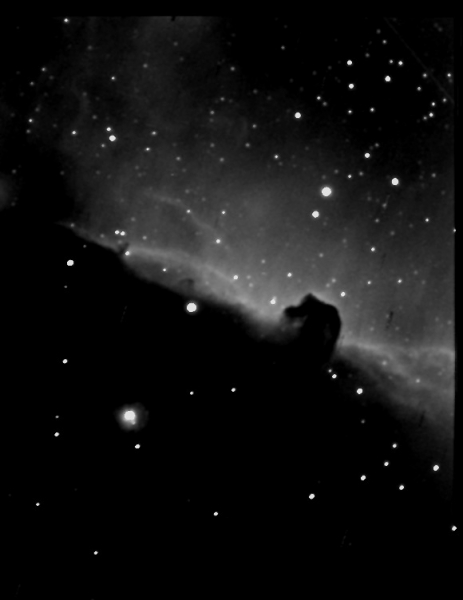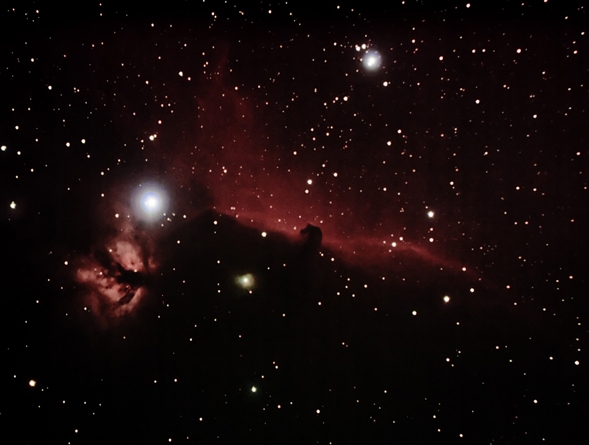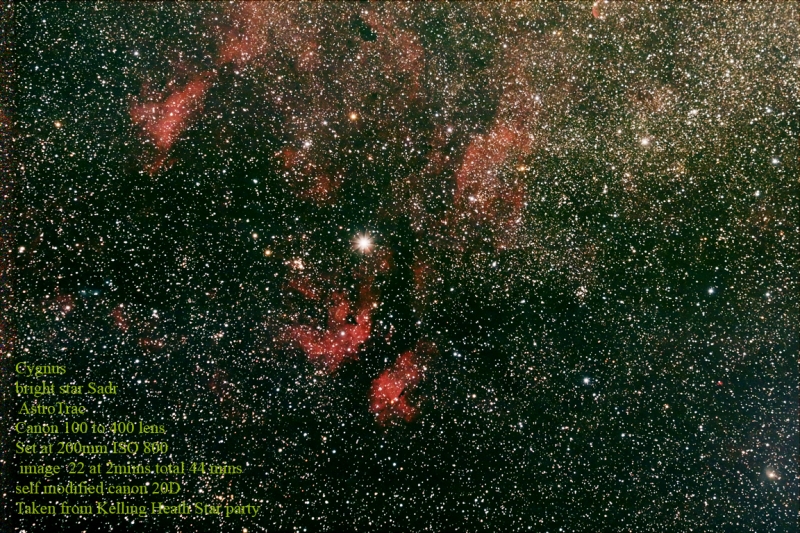So you have observed the Messier and Caldwell objects and want to know what other wonders are out there, the Herschel 400 would be a good start, but if you are after inspiration why not look at what others are observing by having a browse below.
Open Cluster, NGC 6811 in Cygnus
NGC 6811 is an open cluster in the constellation of Cygnus. It has an angular size half that of the full Moon and includes about 1000 stars of roughly similar magnitude. It has also been called “The Hole in the Cluster” because of its dark centre.
Observing:
It appears as a hazy patch in 10x binoculars, but it is best seen at around 70x with a moderate-aperture telescope.
Images by Neil Webster
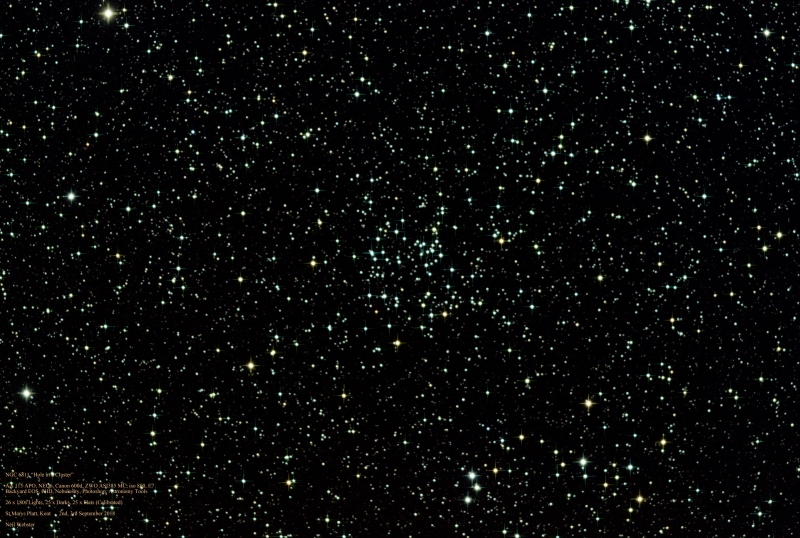
‘Hole in a Cluster’
Altair Astro 115 APO, NEQ6, Canon 600D, ZWO AS1385 MC, ISO 800, f/7
Exposure: 26x 180s
St Marys Platt, England
Open Cluster, NGC6633 in Ophiuchus
NGC 6633 is an open cluster, in the constellation Ophiuchus. Discovered in 1745-46 by Philippe Loys de Chéseaux and independently rediscovered by Caroline Herschel, and catalogued as H VIII.72.
This cluster is nearly as large as the full moon, and contains 30 stars which make it shine at a total magnitude of 4.6; the brightest star is of mag 7.6. Its age was estimated at 660 million years.
Images by Neil Webster
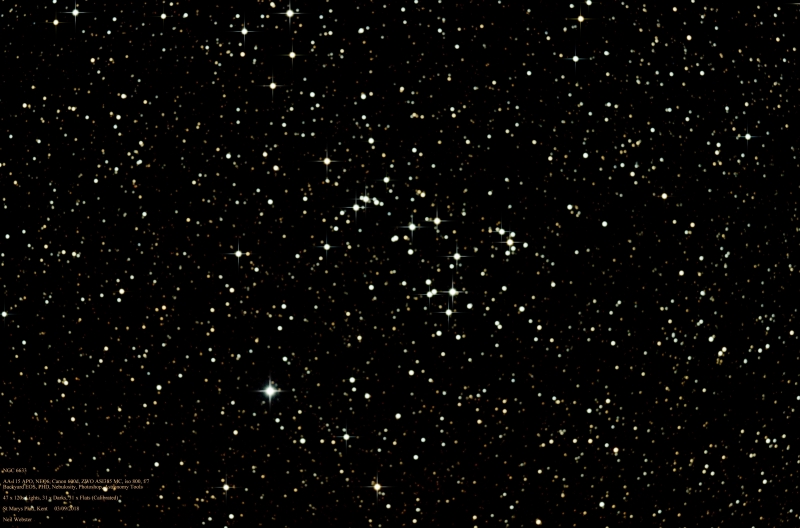 Altair Astro 115 APO, NEQ6, Canon 600D, ZWO AS1385 MC, ISO 800, f/7
Altair Astro 115 APO, NEQ6, Canon 600D, ZWO AS1385 MC, ISO 800, f/7
Exposure 47x 120s
St Marys Platt, England
Open Cluster, NGC225 in Cassiopeia
NGC255, the Sail Boat Cluster is an open cluster in Cassiopeia.
Images by Neil Webster
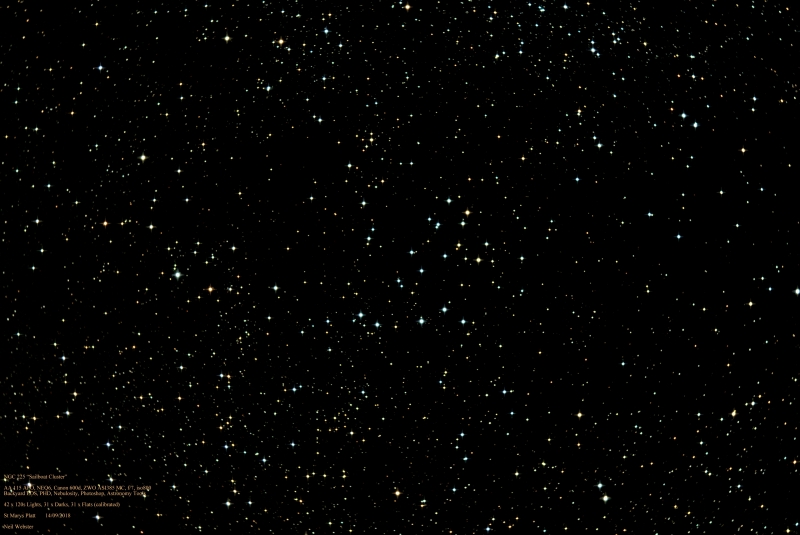
NGC255, open cluster, Sail Boat Cluster in Cassiopeia, Image by Neil Webster
Altair Astro 115 APO
Canon 600D, ZWO AS1385 MC, F7, ISO800, Exposure 42x 120s
Taken on 14/09/2018, St. Marys Platt, England.
Gamma Cygni Nebula, IC1318
The Gamma Cygni Nebula describes the patches of nebulosity around Gamma Cygni, Sadr and consists of emission nebulae, dark dust clouds and star clusters. The area spams 3 degrees of sky so is a good subject to image with a small wide field refractor or prime lens on a tracking mount.
Face on Spiral in Aquila, NGC6814
This face on spiral galaxy lies at a distance of about 66 million light years and is about 75,000 light years across or about half the size of the Milky Way Galaxy. This object has a fairly low surface brightness, and so will be a tougher to observe than the mag 11.3 would suggest. You’ll need dark skies and a large aperture to really appreciate this.
Globular Cluster in Serpens, NGC6539
Globular Cluster in Baade’s Window, NGC6522
Two globular clusters very close to each other seen through the dense star field in the direction towards the centre of our Galaxy, in the constellation Sagittarius. These systems are relatively young for globular clusters, being only about 10 million years old.
They can be spotted between gamma1 and W Sagitarii (see finder chart below). NGC6522 (right) sits right in the centre of Baade’s Window
Seyfert’s Sextet, NGC6027
Seyfert’s Sextet is a group of galaxies about 190 million light-years away in the constellation Serpens Caput. The group appears to contain six members, but one of the galaxies is a background object and another “galaxy” is actually a separated part of one of the other galaxies. The gravitational interaction among these galaxies should continue for hundreds of millions of years. Ultimately, the galaxies will merge to form a single giant elliptical galaxy.
Edge on Spiral in Serpens – NGC5964
The California Nebula – NGC1499
The California Nebula (NGC 1499) is an emission nebula located in the constellation Perseus. It is so named because it appears to resemble the outline of the US State of California. It is almost 2.5° long on the sky and, because of its very low surface brightness, it is extremely difficult to observe visually. It can be observed with a H-Beta filter (isolates the H-Beta line at 486 nm) in a rich-field telescope under dark skies. It lies at a distance of about 1,000 light years from Earth.
The California Nebula was discovered by E. E. Barnard in 1884.
Other Images
Sun | Comets | Mercury | Venus | Atmospheric Optics | Meteors | Auroa and NLC | Moon | Minor Planets | Mars | Jupiter | Saturn | Uranus | Neptune | Messier | Caldwell | All Deep Sky | Conjunctions | Transits | Solar Eclipse | Lunar Eclipse | Wide Field |ISS & Space Junk | Exo-Planets
All images are copyright. Permission must be sought to from the image owner to the use of any of these images.

